It looks like you're using an Ad Blocker.
Please white-list or disable AboveTopSecret.com in your ad-blocking tool.
Thank you.
Some features of ATS will be disabled while you continue to use an ad-blocker.
share:
There have been two very large and mysterious cave complexes discovered in China in recent years, which are related in architectural and decorative
style, nobody has any idea who built them, the best guesses aren't even very educated...
The two systems are at Longyou, 24 chambers thus far discovered, and Huashan, 36 chambers thus far discovered, of which one is open to the public.
This is Longyou;
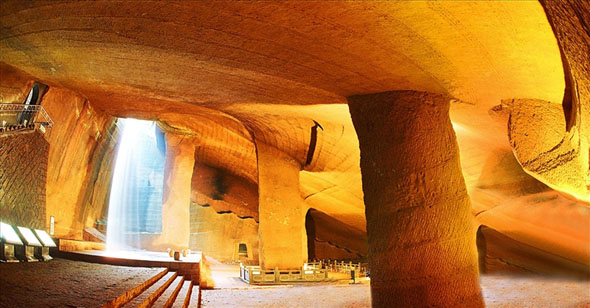
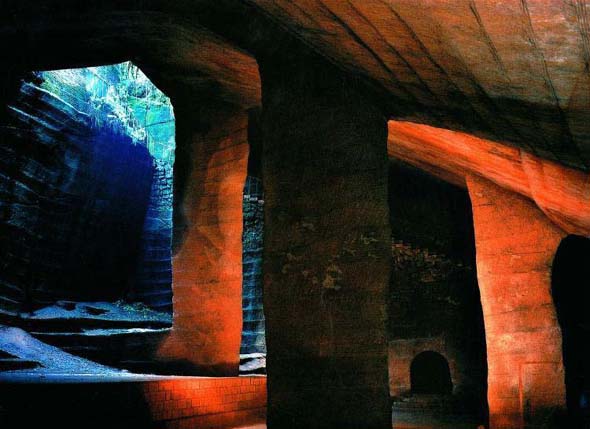

Longyou Caves
And this is Huashan;


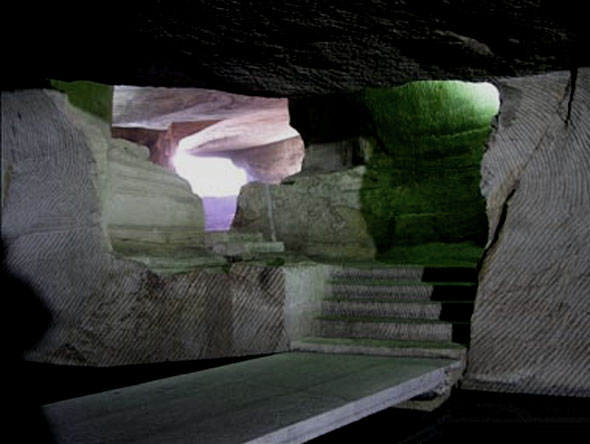
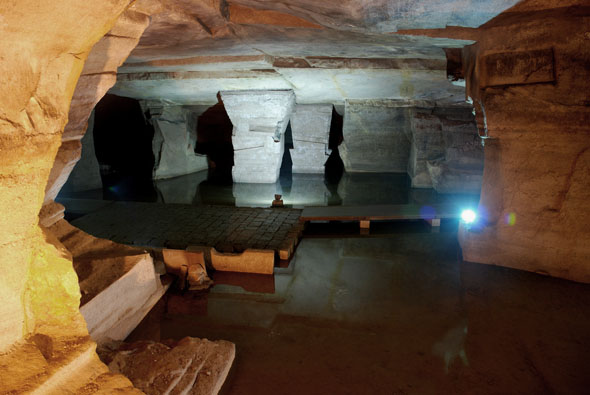
One sees everywhere the quite distinctive concern with carved pattern;
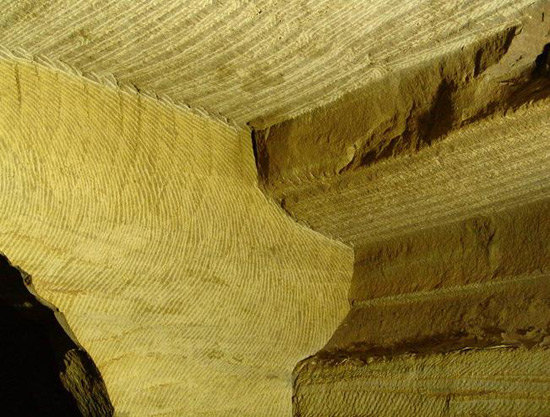
There has been some suggestion that this might relate to similar markings found on local pottery from around 500 Bc, but really nobody has identified this style with any certainty.
Huashan Mystical Grottoes.
Very surprising then that no historical accounts of these caves exist or that artifacts have not been found inside, as to who built them my best guess for what it's worth would be a sect at the beginings of Taoism.
Taoists and Mount Huashan
The two systems are at Longyou, 24 chambers thus far discovered, and Huashan, 36 chambers thus far discovered, of which one is open to the public.
This is Longyou;



In June, 1992, a villager named Wu Anai, decided to pump the water out in one of the locally known caves revealing the first of many man-made caves in the region. After 17 days pumping, enough water had been removed to reveal the cave including several carved stelae, thus confirming his idea that they were not natural reservoirs at all, but rather man-made. The floor of the grotto occupies more than 2,000 square meters, with the tallest point of the cave exceeding 30 meters. The four steles of cave 1 are symmetrically distributed. Following this discovery, he continued to pump out another four caves only to find that they all bore the same markings on the walls and ceilings.
Longyou Caves
And this is Huashan;




One sees everywhere the quite distinctive concern with carved pattern;

There has been some suggestion that this might relate to similar markings found on local pottery from around 500 Bc, but really nobody has identified this style with any certainty.
Also named Mystical Grottos in Flower Hill, the Chinese name is Huashan Mi Ku, found by a farmer when he climbed up the Flower Hill (Huashan) to cut wood in 2000.
There are totally 36 grottos distributively found in the foot of the Flower Hill now, they extend about 5 kilometers along the hill. The grotto interiors show evidence of having been chiseled. As no debris has been found in or around them, archeologists and scientists have yet do discover when and how they were built. Who built and for what?
is particularly worth mentioning is that the Grotto No.35, which is the largest one of its kind that found in Huashan now, extolled as the Underground Palace and Cool Palace, 18 meters in highest point, 170 meters in length, with an area of 12,000 square meters. There are 26 stone pillars triangularly supporting its ceiling, inside the grotto, there are many stone rooms, stone beds, stone bridges, stone storied buildings, stone gutters, and stone pools
Huashan Mystical Grottoes.
Very surprising then that no historical accounts of these caves exist or that artifacts have not been found inside, as to who built them my best guess for what it's worth would be a sect at the beginings of Taoism.
. The first reference to Huashan, which means "Flower Mountain", comes from the Chou Dynasty, 3000 years ago. In fact, the Chinese character "hua" (flower) was invented to name this mountain, which has five peaks that unfold like petals of a flower. Taoists, attracted to this powerful Five Element feng shui, have been coming to Huashan to meditate for at least 2200 years, according to Han dynasty records.
Taoists and Mount Huashan
edit on 7-5-2013 by Kantzveldt because: (no reason given)
Cool post and pictures.... it always amazes me how there is such a disconnect between what we find from previous times or civilizations and today. No
knowledge handed down, just mysteries. Hard to believe places such as this disappear from the mental map at all.... they just pop up with no
explanation. On NPR today they talked about a remote valley in the Amazon with a huge civilization no one knew about.... no knowledge of who lived
there, just vast ruins under the jungle. HUGE area of ruins! Did the entire planet have their minds wiped? Are the ruins actually far more older
than we think? Some antediluvian era?
Awesome. S&F
Just to toss in some Chinese Mythology for the hell of it. These look like they are big enough to house Dragons. Could have been one of the teaching halls. In Chinese Mythology, Dragons taught the ancient Chinese and lived in caves.
Just throwing it in there!
P
Just to toss in some Chinese Mythology for the hell of it. These look like they are big enough to house Dragons. Could have been one of the teaching halls. In Chinese Mythology, Dragons taught the ancient Chinese and lived in caves.
Just throwing it in there!
P
edit on 7/5/2013 by pheonix358 because: (no reason given)
reply to post by pheonix358
You're probably right, with regards to the School of the Awakening Dragon...
personaltao.com...
reply to post by jaxnmarko
I think what we see here is evidence of Taoist beginings, mysterious yet dynamic, the Way of the Celestial Masters.
Taoism
There is also rock art from the Huashan Mountain region, which might also relate to these mysterious origins;
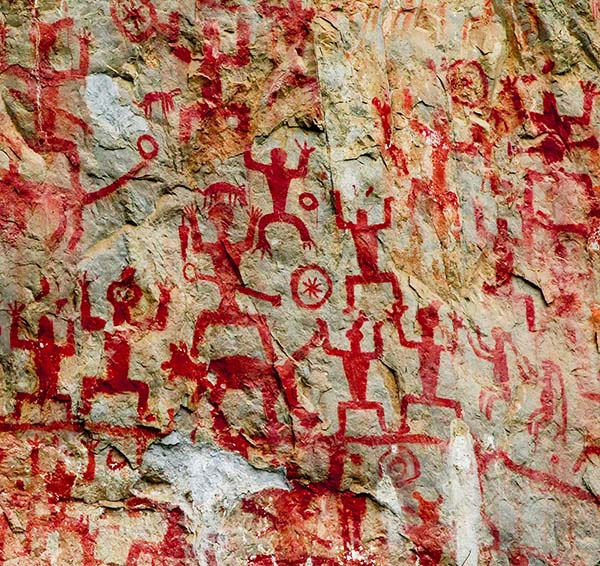
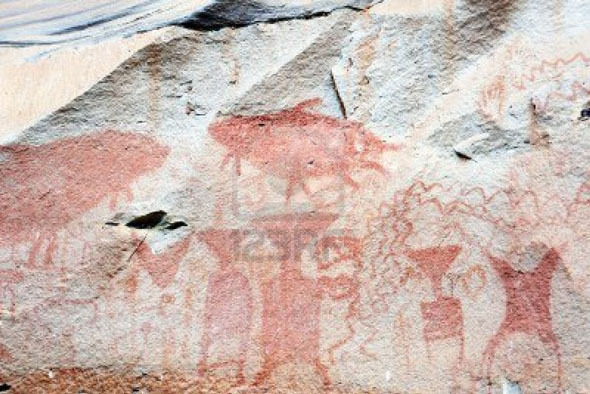
You're probably right, with regards to the School of the Awakening Dragon...
personaltao.com...
reply to post by jaxnmarko
I think what we see here is evidence of Taoist beginings, mysterious yet dynamic, the Way of the Celestial Masters.
aoism, also known as Daoism, is an indigenous Chinese religion often associated with the Daode jing (Tao Te Ching), a philosophical and political text purportedly written by Laozi (Lao Tzu) sometime in the 3rd or 4th centuries B.C.E. The Daode jing focuses on dao as a "way" or "path" — that is, the appropriate way to behave and to lead others — but the Daode jing also refers to Tao as something that existed "before Heaven and Earth," a primal and chaotic matrix from which all forms emerged. Taoism did not exist as an organized religion until the Way of the Celestial Masters sect was founded in 142 C.E. by Zhang Daoling, who based the sect on spiritual communications from the deified Laozi. The Way of the Celestial Masters and other later sects of Taoism engaged in complex ritual practices, including devotion to a wide range of celestial divinities and immortals, and thousands of Taoist religious texts were produced over the centuries.
Taoism
There is also rock art from the Huashan Mountain region, which might also relate to these mysterious origins;


edit on 7-5-2013 by Kantzveldt because: (no reason given)
reply to post by Kantzveldt
Exquisite.
I marvel at the complexity of our ancient brethren, and their awe inspiring works.
S&F
Exquisite.
I marvel at the complexity of our ancient brethren, and their awe inspiring works.
S&F
Originally posted by AthlonSavage
reply to post by Kantzveldt
How was the rock carved out so precisely and effectively back then?
By trades people who took great pride in their work and spent time getting it right. Hard to find such people in Western Society. Every one wants to make a million in as short a time as possible.
P
reply to post by pheonix358
I dont deny that but also seriously for consideration on that picture where three faces come to join, the patterns look like machining marks....im mean, not hand tools, systematic like done with a machine face of some kind.
I dont deny that but also seriously for consideration on that picture where three faces come to join, the patterns look like machining marks....im mean, not hand tools, systematic like done with a machine face of some kind.
edit on 7-5-2013 by AthlonSavage because: (no reason
given)
Beautiful thank you for showing us that K,
hadn't heard of them before.
hadn't heard of them before.
Excellent find their mate, most beautiful and definitely Man made, some of the excavations even look like they have been machine tooled. SnF!
Beautiful! Very much appreciate the post.
How gorgeous is the light and symmetry in the cave work?
I am toddling off to research these some more =)
How gorgeous is the light and symmetry in the cave work?
I am toddling off to research these some more =)
edit on 7-5-2013 by wagtail because: Spelling
Kantzveldt, you phrase the title of the topic as if it was recently discovered.
That is sensationalism.
the grottoes were discovered around 23 years back and is not a recent find.
That is sensationalism.
the grottoes were discovered around 23 years back and is not a recent find.
"A rough estimation of the workload involved in building these five caves is awe-inspiring. The four caves cover an average floor surface of 1,200
square meters, so each of the caves should have involved excavation of 36,000 cubic meters of stone. Since a total of at least 24 such caves have
already been found in Shiyanbei Village, the overall excavation would be 900,000 cubic meters."
What comes to mind to me, is where are the spoils of the interior carving? Somewhere outside these caves there has to be the stone removed similar to what you see in a Mine. Simply carving would be a Herculean task, but the massive amount of spoils would have been the first evidence of such a complex.
What comes to mind to me, is where are the spoils of the interior carving? Somewhere outside these caves there has to be the stone removed similar to what you see in a Mine. Simply carving would be a Herculean task, but the massive amount of spoils would have been the first evidence of such a complex.
Originally posted by Kantzveldt
nobody has any idea who built them, the best guesses aren't even very educated...
I'll give you another uneducated guess:
Chuck Norris did it
The rounded relief of the "scratch marks" look like it came from a shoe during a round house kick... ...we know only one man can do that to carve a large cavern system!
edit on 7-5-2013 by ahnggk because: (no reason given)
reply to post by coredrill
Huashan was first discovered in 2000 when four chambers were drained, the current total reported is 36, with work ongoing to make more chambers within the complex accessible, given the speed any quality information comes out of China this is all relatively recent.
reply to post by Plotus
Yes that's one of the mysteries.
www.theepochtimes.com...
An intriguing aspect to the caves is that the arrangement of the chamber walls and pillars stifles any echo, silence possibly being important to those who constructed them.
reply to post by wagtail
The aesthetics are great, one of the main reasons i considered them Taoist.
reply to post by AthlonSavage
That would be a question for Christopher Dunn and his entourage...
Huashan was first discovered in 2000 when four chambers were drained, the current total reported is 36, with work ongoing to make more chambers within the complex accessible, given the speed any quality information comes out of China this is all relatively recent.
reply to post by Plotus
Yes that's one of the mysteries.
There are three mysteries surrounding the Huashan Mysterious Grotto. First is the Bishui Pond, which is an underground pond so deep that three months of pumping would be insufficient to remove all the water from it. Second are the stone columns, which are over 33 feet tall and are arranged in a glyph-like formation to support the ceiling of the cavern. The orientation of the columns suggests the ancients' knowledge in theoretical mechanics and in its precise application. Lastly, this gigantic cavern is echo-free as the arrangement of the walls prevents resonance of sound.
The exact time of the cave's construction is currently unknown. However, according to the minerals found inside the cave, the experts estimate that it was constructed at least 1,700 years ago.
How was the cavern constructed? Why was it necessary to have these caves? What happened to the 100 thousand squares of rocks dug in order to construct the cavern? How were they mined and transported? The caves have a few already mined minerals, so why were those not transported out? There are also many rock walls 10 centimeters thick, why was it not removed but left standing in the middle of the large hall? What was the purpose of the squared and rounded holes hidden in the stone columns? Why are there no historical records of this gigantic cavern? Experts have postulated many theories but have yet to reach a definitive answer.
www.theepochtimes.com...
An intriguing aspect to the caves is that the arrangement of the chamber walls and pillars stifles any echo, silence possibly being important to those who constructed them.
reply to post by wagtail
The aesthetics are great, one of the main reasons i considered them Taoist.
reply to post by AthlonSavage
That would be a question for Christopher Dunn and his entourage...
edit on 7-5-2013 by Kantzveldt because: (no reason given)
Thanks for taking my breathe away this morning Kan! Absolutely stunning.
My early morning paredolia is kicking in and seeing sleeping monks.

My early morning paredolia is kicking in and seeing sleeping monks.

Absolutely stunning S&F so these caves were used as some sort of temple?
new topics
-
Half-Life 2 is 20 Years Old - its Also Free on Steam until the 18th
Video Games: 3 hours ago -
Does the Trump win mean No More Taylor Swift??
Politicians & People: 6 hours ago -
Trump-appointed judge blocks Biden administration overtime rule
Social Issues and Civil Unrest: 8 hours ago
top topics
-
Don't cry do Cryo instead
General Chit Chat: 13 hours ago, 12 flags -
Does the Trump win mean No More Taylor Swift??
Politicians & People: 6 hours ago, 12 flags -
Trump-appointed judge blocks Biden administration overtime rule
Social Issues and Civil Unrest: 8 hours ago, 7 flags -
Tariffs all around, Except for ...
Dreams & Predictions: 16 hours ago, 6 flags -
Half-Life 2 is 20 Years Old - its Also Free on Steam until the 18th
Video Games: 3 hours ago, 1 flags
active topics
-
Does the Trump win mean No More Taylor Swift??
Politicians & People • 43 • : TzarChasm -
Don't cry do Cryo instead
General Chit Chat • 9 • : Myhandle -
President-Elect DONALD TRUMP's 2nd-Term Administration Takes Shape.
Political Ideology • 207 • : EyeoftheHurricane -
WATCH LIVE: US Congress hearing on UFOs, unidentified anomalous phenomena
Aliens and UFOs • 96 • : putnam6 -
Thanksgiving 2024
Member Art • 20 • : argentus -
Mike Tyson returns 11-15-24
World Sports • 66 • : matafuchs -
Trump-appointed judge blocks Biden administration overtime rule
Social Issues and Civil Unrest • 7 • : NoCorruptionAllowed -
Anybody else using Pomodoro time management technique?
General Chit Chat • 12 • : Cabin -
Tariffs all around, Except for ...
Dreams & Predictions • 28 • : network dude -
Half-Life 2 is 20 Years Old - its Also Free on Steam until the 18th
Video Games • 1 • : Athetos
